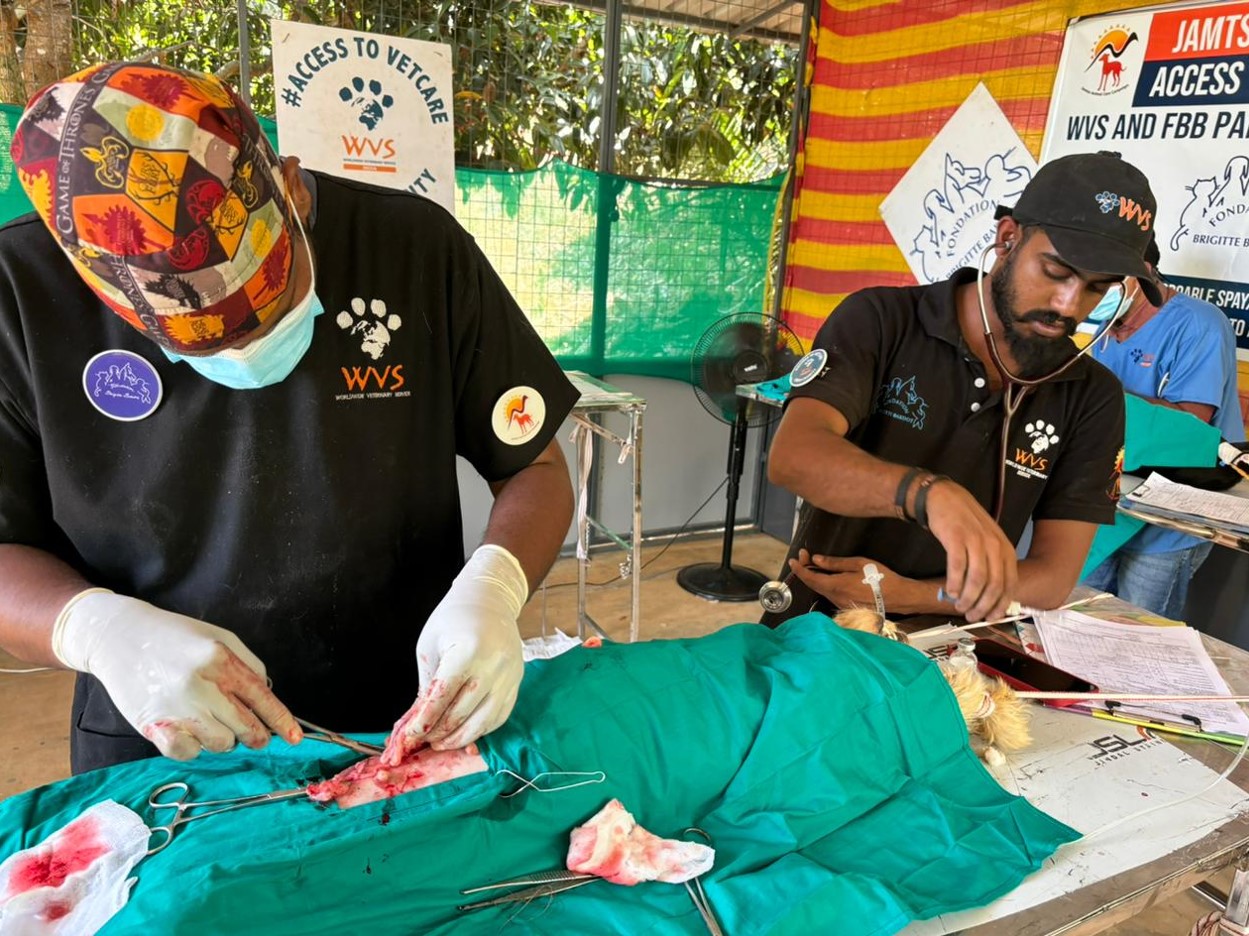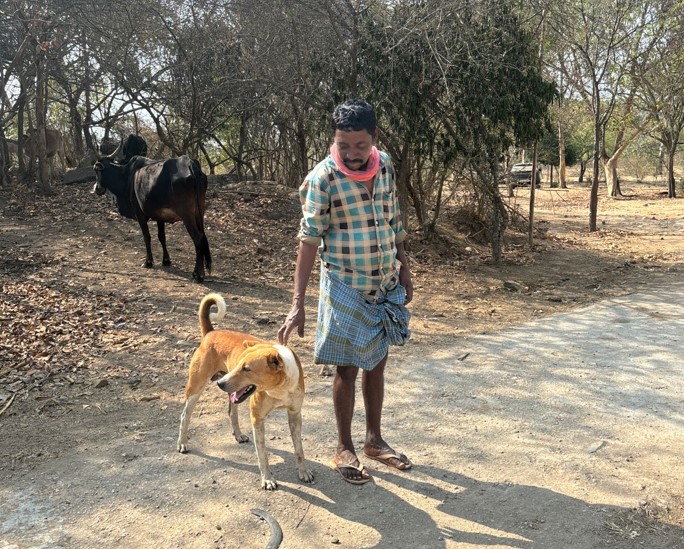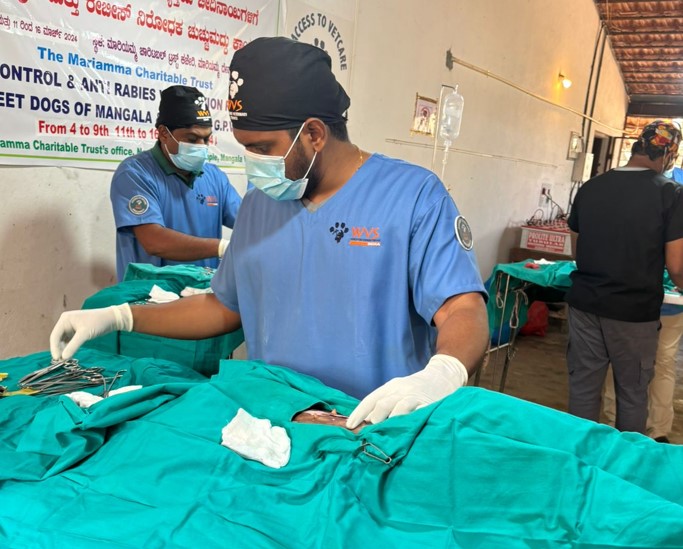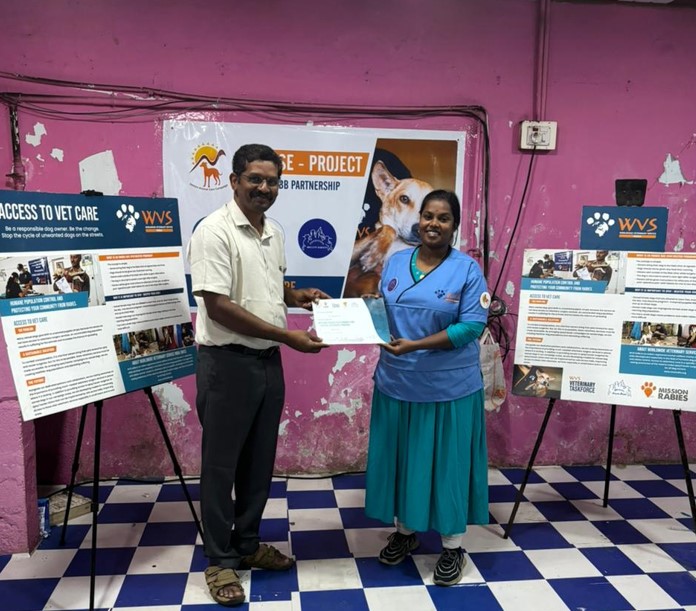A core focus of WVS is providing expert veterinary care to animals in places where it is lacking. World Veterinary Day takes place on 27th April 2024 and provides an opportunity to reflect on the barriers that communities across the world have in accessing affordable veterinary care for their animals.
Dr Ilona Otter, our Director of International Veterinary Training India, explores the challenges of humane dog population management in India and the opportunities presented through owned dog spay/neuter campaigns.

Author: Ilona Otter
In 2022, I was invited by Dogs Trust to speak at the International Companion Animal Welfare Conference in Bulgaria (ICAWC) about the WVS India International Training Centre (Ooty) during its first 12 years in action.
My biggest take-away-home inspiration from the conference came from a Canadian vet who presented about his work in improving access to veterinary care among the First Nations in northern Canada. The organisation he worked with would fly out to the very far out communities, that lived beyond road access, to set a community spay/neuter clinic in a school sports hall or community hall. They would then spend couple of days or weeks there providing spay/neuter surgery services, as well as other basic veterinary care for dogs and cats belonging to the residents of the community.
In many ways, there was nothing particularly new to me in that concept. I have been spaying free-roaming owned dogs in garages, garden sheds, army tents, community halls, and school classrooms in India already since 2004. However, it struck me there, at the ICAW conference, that indeed, in most parts of the world, spay/neuter campaigns to prevent unwanted pregnancies, are based on improving access to veterinary care for owners who otherwise would not be able to access affordable basic veterinary care for their pets. In India, this approach has received less attention because of the problem of huge street dog population (ownerless dogs) that is so obvious for anyone to see and ask questions about the best solution to solve it.
We need to acknowledge that street dogs are just the symptom of a problem further upstream. They do not fall from the sky, nor sprout up after rains. They are the result and product of unwanted pet dog pregnancies. In India, most owned dogs in small towns, villages and outskirts are allowed to roam free at least part of the day. Basically, anyone who lives on the ground floor and controls their own main door, is likely to let their dog to roam free at least some part of the day. This habit can easily result in pet dogs getting unwantedly pregnant if they have not been sterilised. Finding homes for all puppies born this way is not easy or at all possible and so most of these unwanted puppies, especially females, will get dumped on the streets. Some of them will suffer and die very young, some will make it and eventually breed themselves to give birth to more ownerless street dogs.
The important question to answer is: Why do these dog owners not have their dogs sterilised but allow these pregnancies and unwanted puppies to be born? The answer is very often: Because of lack of access to affordable spay/neuter surgeries.

For many decades, the focus of humane dog population management in India has been on catching these ownerless dogs from the streets, surgically sterilising them, and then returning them back to the streets. ABC centres that are set up for this purpose mainly exist in big cities and towns. However, in most small towns and in all rural India, such programmes are not yet available, and it is unlikely that such centres would be established in every small town across the country. Therefore, a massive step forward in humane dog population management would be if access to veterinary care, especially access to veterinary surgery services for owned dogs, would be made more easily available, accessible, and affordable.
Spay/neuter campaigns that target owned dogs in communities that do not otherwise have access to such veterinary services are the need of the hour in India to prevent unwanted pet dog pregnancies and to control the growth of roaming, ownerless dog population. They are easier to set up than stray dog-focused programmes since no dog catchers, dog catching vehicles and post-operative kennel facilities are required. A skilled veterinary team can set up a campaign clinic into any available room or hall by bringing all the required equipment; foldable surgery tables, autoclave, instruments, oxygen cylinders, medicines and materials, with them. Owners bring their dogs, sign a consent form for the surgery, wait while surgery takes place, and then take their dogs along with instructions for post-operative care, back home with them after the surgery.
In addition, pet dog registration enforced by local municipality authorities, combined with access to affordable veterinary spay/neuter services and mandatory sterilisation of any pet dog that is allowed to roam free even part of the day, would go a long way in preventing unwanted puppies getting abandoned on the streets. This would help to stabilise dog populations to levels where annual rabies vaccination programmes would easily achieve sufficient coverage.
I am not denying the issue with the huge ownerless, roaming dog population in India and the need to improve and increase ABC-programmes that effectively do humane dog population management and rabies control of stray dogs. However, I want to point out that the low-hanging fruit in this very multi-faceted and complex matter, is to ensure that all owned dogs have access to essential veterinary care. This includes at least access to the spay/neuter surgery and annual vaccination against rabies. With these in place, the work towards canine rabies eradication in India would take a massive leap forward.

Barriers to accessible veterinary care
In India, the factors affecting access to vet care have not yet been studied nor officially connected with the issue of large ownerless stray dog population, but an article by Michelle Lem (2019), Barriers to accessible veterinary care, published in Canadian Veterinary Journal, summarises the current research in this topic. Common factors that affect the pet owner’s ability to access veterinary care include socioeconomic and financial factors along with challenges in arranging transportation, geographic barriers, and not knowing where to go for veterinary care.
“Geographical factors for animal owners may be tied to socioeconomic status for those living in impoverished areas, but also for rural or remote areas which may be “care deserts” where there are few to no veterinary services available. Such geographical issues impact care provision for veterinarians as well, creating logistical, operational, and financial challenges in serving large geographical areas with smaller populations, as well as challenges in attracting veterinarians to rural and remote areas. The issue of serving rural and remote populations is not unique to veterinary medicine and is tied to several larger systems and structures.”
These same factors can be easily identified in India as well. Private veterinary clinics do not exist in rural areas, and in cities where they do exist, they may be too expensive for large sections of the population. Private veterinary clinics have traditionally not included low-cost spay/neuter surgery campaigns in their activities because such work has been seen as only belonging to the NGO sector sterilising street dogs.
The main source of veterinary help in small towns and villages are usually the government veterinary hospitals and dispensaries but often the veterinarians manning these facilities, have either not got the training or time to do spay/neuter surgeries, or they are lacking examples and models on how to set up owned dog spay/neuter campaign days. Or, they too, have simply associated spay/neuter surgeries with NGOs and ABC-centres and not something to offer for owned pet dogs.
Even in big cities where NGO-run Animal Birth Control (ABC) programmes are functioning, owners may feel hesitant to take their dogs to these ABC centres for surgery. Reasons for this hesitance include anything from lack of awareness to lack of transport and lack of trust in the centre and the quality of work there (because it is seen as ‘only for street dogs’).

WVS India and Access To Vet Care
Owned dogs have always been welcome to get operated in all WVS India projects across the country. However, since the beginning of 2023, many of our projects have begun to specifically move towards more owned dog focused outreach programmes and campaigns using various different formats. We have also begun to demonstrate owned dog clinics for other vets by including veterinary surgery experience participants into such campaign clinics. Besides learning surgical skills, they will also experience first-hand how they themselves could continue similar work, using those facilities they have in their workplaces and encouraging more owners to get their dogs operated. This is real, true, effective veterinary capacity building for better welfare of dogs.
Learn more
Watch our Access To Vet Care video on YouTube here. To hear more about our global projects and ways to get involved, sign up to our email newsletter.
